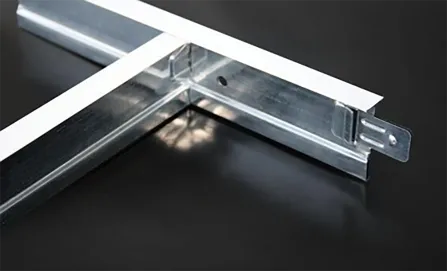Nov . 24, 2024 16:04 Back to list
what are mineral fiber ceiling tiles made of
Mineral fiber ceiling tiles are a popular choice in both commercial and residential spaces for their excellent acoustic properties, thermal insulation, and ease of installation. These tiles are primarily made from a combination of natural and synthetic materials that include mineral fibers, such as fiberglass, rock wool, and volcanic rock. Understanding what these materials are and how they contribute to the functionality of mineral fiber ceiling tiles can help in discerning their advantages and applications.
The main component of mineral fiber ceiling tiles is typically mineral fiber, which is derived from various naturally occurring substances. Rock wool, for instance, is made from igneous rock and has been processed through high-temperature techniques to create fibers that provide excellent sound absorption and fire resistance. This makes rock wool an ideal choice for environments where acoustic control is essential, such as offices, schools, and auditoriums.
Another significant component of mineral fiber ceiling tiles is fiberglass. Fiberglass is created from silica sand and other raw materials that are melted and then spun into thin fibers. This material is lightweight, non-combustible, and durable, making it well-suited for ceiling applications. Its ability to resist moisture is particularly valuable in areas prone to high humidity, as it reduces the risk of mildew and mold growth.
what are mineral fiber ceiling tiles made of

In addition to rock wool and fiberglass, some mineral fiber tiles incorporate recycled content, which contributes to their overall sustainability. Manufacturers may use post-consumer recycled products, such as paper and wood fibers, to enhance the eco-friendliness of their tiles. These tiles not only help in reducing waste but also contribute to improved indoor air quality, as they can be designed to meet various environmental standards.
The manufacturing process of mineral fiber ceiling tiles often involves pulping the raw materials, forming them into sheets, and then compressing and curing them to achieve desired densities. The tiles can then be finished with coatings to enhance their aesthetic appeal, allowing them to come in various textures and colors to fit the design preferences of different environments.
In summary, mineral fiber ceiling tiles are made primarily from mineral fibers such as rock wool and fiberglass, often supplemented with recycled materials. These components combine to create a product that offers exceptional acoustic performance, fire resistance, and sustainability. With their versatility and functionality, mineral fiber ceiling tiles remain a favored choice for enhancing the look and feel of a wide range of spaces, making them a critical element in modern building design.
-
Durable Ceiling T Grid Systems | Easy InstallationNewsAug.29,2025
-
PVC Gypsum Ceiling: Durable, Laminated Tiles for Modern SpacesNewsAug.28,2025
-
Pvc Gypsum Ceiling Is DurableNewsAug.21,2025
-
Mineral Fiber Board Is DurableNewsAug.21,2025
-
Ceiling Tile Clip Reusable DesignNewsAug.21,2025
-
Ceiling T Grid Modular DesignNewsAug.21,2025







